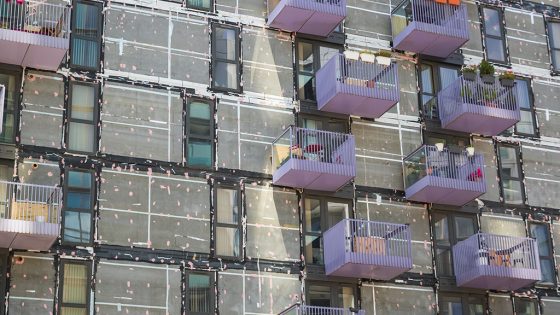The government is set to ramp up its post-Grenfell cladding replacement drive by creating a dedicated watchdog and enforcement unit.
Building safety minister Alex Norris revealed that officials were keen to create a Remediation Enforcement Unit.
Answering a written question in Parliament last Friday (7 February), he said this team would “hold owners of ACM-clad buildings to account”.
He said: “Building Safety Regulator (BSR) officials are… working with Ministry for Housing, Communities and Local Government [MHCLG] officials on setting up a dedicated Remediation Enforcement Unit within the BSR.
“The Remediation Enforcement Unit is designed to hold owners of ACM-clad buildings to account, enforcing remediation where necessary, and will be essential to meet the government’s priority for remediation of unsafe higher-risk buildings.
“We are considering further options to ensure compliance with the building safety regulations as part of the ongoing Spending Review.”
The results of the Spending Review are expected to be announced in late spring.
The new standalone unit will focus on “an enhanced enforcement capability on 18m+ buildings”, an MHCLG spokesperson told Construction News.
“Working with local regulators they will support the work to administer, enforce and drive principal accountable persons to remediate high-risk buildings with combustible cladding (ACM and HPL).”
The Health and Safety Executive (HSE) had acknowledged “teething troubles” for the BSR, after it emerged the body had approved for construction just two out of 130 higher-risk building schemes submitted by developers since the new gateway regime began.
HSE chair Sarah Albon said on 5 February that “a very large proportion” of applications were “failing to demonstrate that they meet the new safety standards that are required”.
This “undoubtedly causes concern and cost and delay”, she told Parliament’s Work and Pensions Committee.
Norris told MPs last week: “We understand that the introduction of the new regulatory regime initially resulted in a lot of poor-quality and incomplete applications from industry.
“The BSR continues to support applicants to meet the functional requirements of the building regulations. It is worth noting that the requirements in the regulations are not new and rejected applications contribute to the processing time of compliant applications.”
In another written answer last Friday, Norris said the BSR had told applicants “to currently plan on the basis of 20 weeks” for gateway two approvals, “although we are seeing signs that this processing time is improving”.
He added: “This is compared to the service level agreement of 12 weeks for new-builds. We also understand there are specific applications which exceed current average processing timescales.”
Norris also told MPs that the government had invested £16.5m in new local authority building control inspectors to support the BSR.
“Work to recruit and train these additional staff is well underway,” he said.
But the British Property Federation called yesterday (10 February) for the government to allocate additional resources for the BSR.
This would “reduce delays and enable projects to move forward”, the industry body claimed.
It added: “The backlog of applications going through the BSR is causing projects to either be delayed or abandoned altogether, running counter to the urgent need for new homes.”

